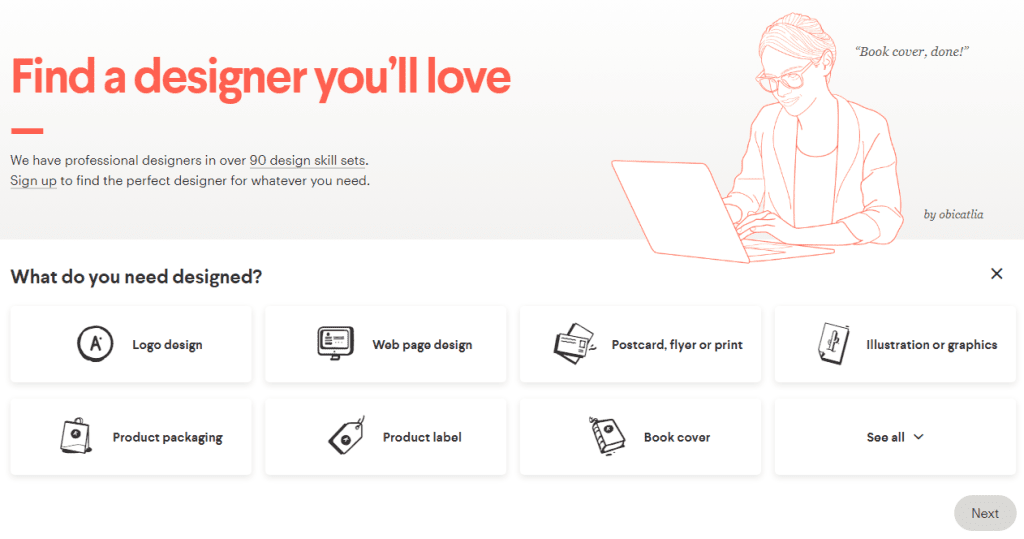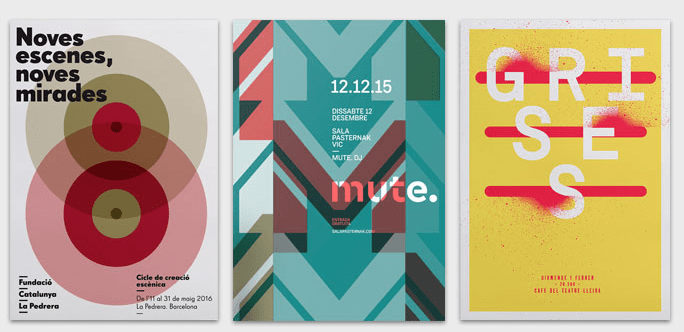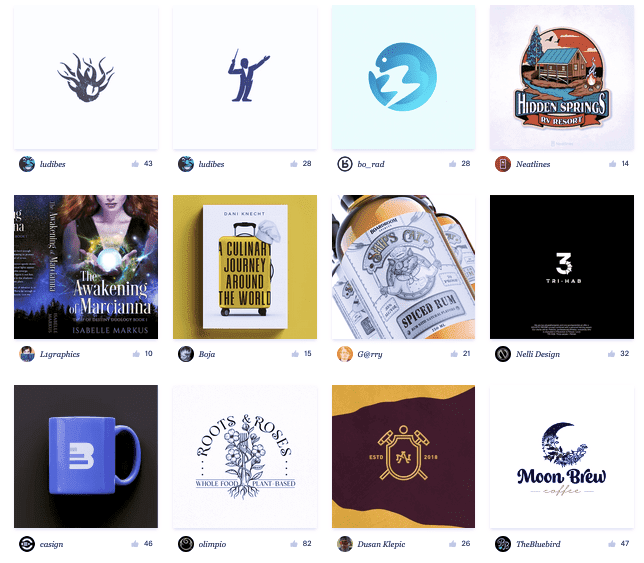Do you need a designer? How To Choose The Right Designer For Your Business
So you made a decision to rebrand your existing business, or you’re building your new business and want to get a perfect start, but now the big question is, “how do I go with hiring the right designer for my project?”
Embarking on this journey may feel overwhelming when you’re unsure where to begin your search. In this post we’ll provide you with insights and tips to streamline the process of finding and selecting the graphic designer.
Investing in a designer is well worth it as they can help you build a strategic and unique brand for your business. They’ll push boundaries. Encourage thinking that may have never crossed your mind before.
To kickstart your quest for the designer we recommend exploring platforms like 99Designs. This platform offers options for finding designers who specialize in logo design, web design, UX/UI design, product packaging and advertisement tasks. Whats more all three options available, through 99Designs ensure that you retain ownership of the copyright after completing the project.
So get ready to embark on a journey of finding the perfect designer to bring your vision to life!
Browse designers’ profiles and reach out to them yourself
99designs platform makes it easy to search through its community of designers, with filters for skill level and areas of expertise, and industry specializations. The cost depends on the designer.
Start a contest
The beauty of a 99designs logo contest or app/web/UI design contest is that you can see multiple submissions for your assignment and choose the one you like best. This is the perfect approach for people who want to see what they’re buying before they pay.
Get a free design consultation
You can request a consultation with a 99designs rep to explain your project. They’ll suggest designers based on your needs. This option essentially plays out like a 1-on-1 project. It’s a huge convenience for people who aren’t sure what to look for in a designer or who don’t have a lot of time.

Hiring a designer is a big decision, which is why we’re going to share with you the most important factors to consider if you’re thinking about hiring a graphic designer for your branding.
1. DEFINE YOUR BRAND MESSAGE
Before you even begin your search for designers to create your assets it is essential to explore and understand your brand. This involves defining the core values of your business establishing a brand voice determining your messaging and marketing strategies identifying your target audience and creating a client avatar. It’s crucial to recognize that your brand extends beyond a logo; it represents the promise you make to your customers.
Without an consistent brand message, values and visuals it becomes challenging for customers or clients to trust you.. Without their trust gaining business becomes difficult which ultimately affects your revenue.
Defining every aspect of your brand is directly linked to the success of your business. Therefore before reaching out to a designer, for assistance make sure you have clearly defined the messaging, brand voice, core values, mission statement, target market demographic as ideal clientele, for your business.
2. SET INTENTIONS – Shoot for the Moon. Even if you miss, you’ll lang among the stars
Now that you have established your brand it’s time to outline your aspirations for what you want to accomplish with your branding when collaborating with a designer. Create a list of objectives. What do you aim to achieve for your business through this brand design? Are you seeking to attract a discerning clientele? Do you desire investment in your startup? Are you looking to secure placement, in chain stores?
Clearly define your goals for your brand. These goals will guide the direction of your branding as the designer intentionally develops a brand that aligns with achieving those objectives.
3. DETERMINE YOUR BUDGET
Before you begin your search, for a designer it’s crucial to establish a budget. Knowing your constraints will make it easier to narrow down your options. It’s true that determining the budget for branding or web design isn’t a task.
However while considering your budget it’s essential to recognize the value of investing in branding. These elements play a role in building trust, credibility and brand recognition with your customers. Establishing a brand right from the start is highly important.
It makes financial sense to invest more in high quality branding than settling for poor quality work that will eventually require redoing.
A general guideline for determining your budget is to consider how revenue you expect to generate in your business this year. Take that figure. Allocate around 5 10% of it towards branding, marketing and web design.
For instance if you’re running a business like wedding photography and anticipate earning around $50,000, in income allocating 5 10% of that would amount to $2,500 $5,000.
Here’s a budget guideline to consider allocating your funds towards avenues, like refreshing your brand designing a website, professional brand photography advertising on Instagram, Facebook and Google and more.
4. COLLECT DESIGN INSPIRATION
Now that you’ve got the serious business under control, it’s time for the fun stuff! This is where you get to have fun and do some daydreaming about your branding and web design. We always recommend that our clients put together a Pinterest board for us, collecting inspirational of colors, fonts, photography, etc. that they feel inspired by.
It’s a great way for us to see our client’s vision through images when words just aren’t enough. Look at sites like Pinterest and Instagram, and even books and magazines, for inspiration. However, be sure that you’re not only collecting things that you like but things you believe actually represent the style you want your business to embody.
5. SEARCH FOR DESIGNERS
Start by taking a look at the design inspiration you already collected either online or from books/magazines, and try to find website portfolios or Instagram accounts for the artists of the design inspirations you love the most.
Continue by searching Pinterest, Instagram, Behance, or Google using keywords related to the type of work and design style you’re looking for, as most of the posts with have credited artists listed and links to their portfolios. Put all the website or Instagram links for the artists you like into a Word or Google Doc to revisit.
6. MAKE YOUR TOP PICKS
Once you have compiled a list of artists begin reviewing their portfolios. Take the time to carefully assess each artists portfolio to ensure it showcases the quality and style of work they produce. It is important to note that consistency, in their art style is crucial. Remember, prioritizing quality over quantity is key. Having projects with different styles on a designers website does not automatically make them the best fit for your project. A curated portfolio featuring around 10 projects should be sufficient if the designs demonstrate high quality work.
Additionally it would be beneficial to gather testimonials from designers websites Google business pages or their social media platforms like Facebook or Instagram. Are there reviews from clients and design projects? Do they maintain an presence? It is essential to ensure you are not examining work from a designer who has since disappeared and possesses one review!
Take note of whether their website appears up, to date or neglected with cobwebs speaking. Does it align with design trends? Is the site easy to navigate? Do they provide a FAQ section for you to gain insight into their offerings? Is there a contact form ? These are all factors to consider when narrowing down your choices.
7. CONTACT YOUR FAVORITE DESIGNERS
Once you’ve completed your list and narrowed it down to your choices, which should ideally be, between 2 to 5 options it’s time to initiate contact with each designer and gather quotes for your project. You can reach out through the method of communication they prefer such as email, phone or a contact form on their portfolio website.
When contacting each designer make it clear that you are inquiring about your project. Provide them with some details about your business. Outline your objectives in investing in branding or web design.
Engage in a conversation about the desired timeline for the project. Discuss your budget so that they have an understanding of what resources you have available. Inquire about their availability. Request a price estimate from them.
As you communicate with these picks pay attention to their communication skills. Are they prompt in responding to emails or do they take days? Assess whether they ask questions and demonstrate expertise in their field. Consider if you believe you will enjoy collaborating with them over the coming weeks or months, for this project.
Finding someone you connect with and who truly comprehends your vision for your brand is crucial.
8. TAKE THE LEAP
Hopefully, after having conversations with all of your options you will be able to come to a decision on which designer to proceed with. This is a moment! Once you have made your selection inform your chosen designer. They will assist you with the steps. It’s important that they provide you with a contract and an invoice as a sign of their professionalism.
If they don’t have business practices in place, such as contracts and professional invoicing systems then it’s advisable to move on! Look for the designer, on your list. However likely the designer you’ve chosen will provide everything you need right from the beginning. Guide you smoothly throughout the entire process.

